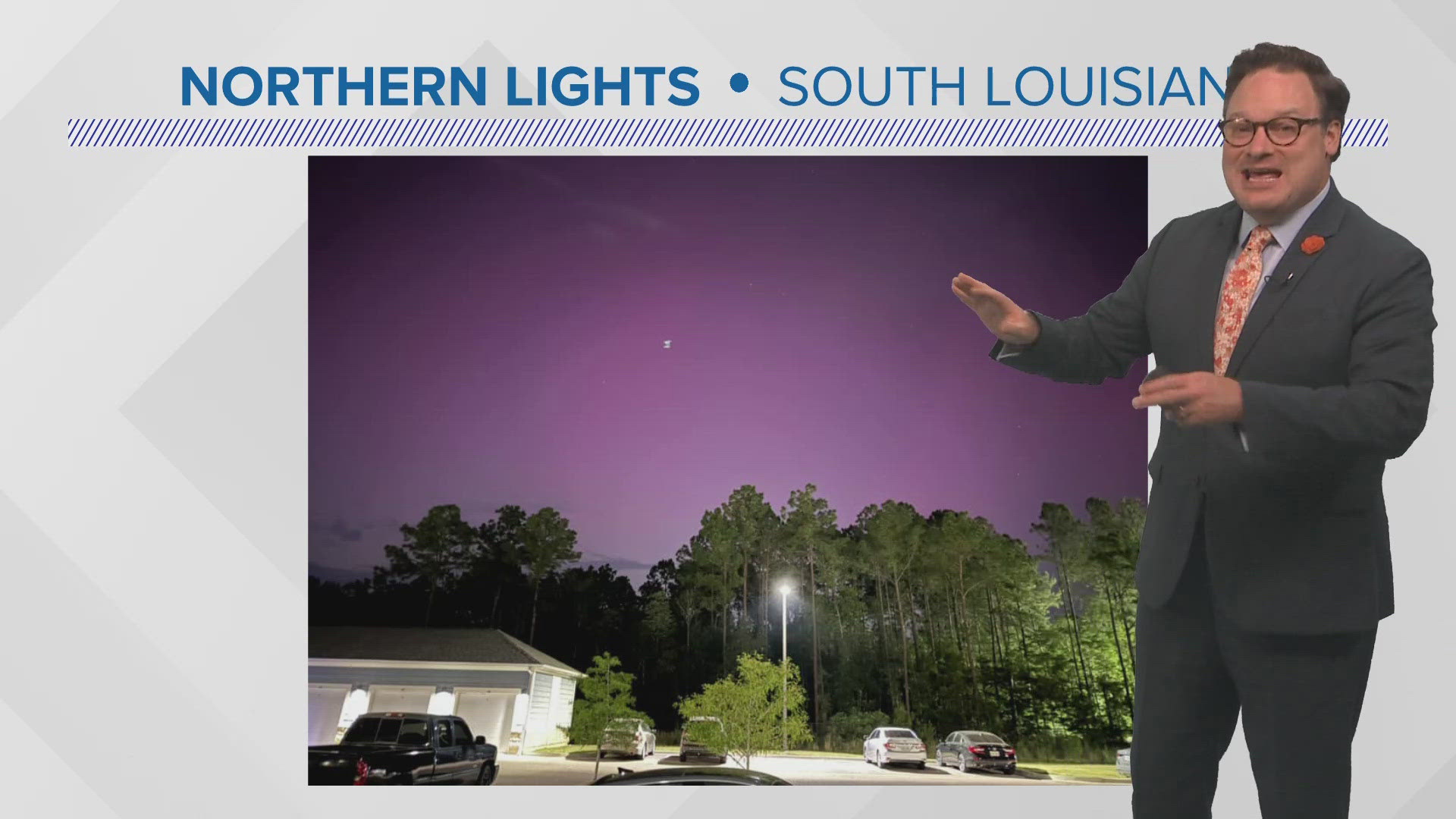Many residents away from the bright lights in New Orleans were treated to an unexpected but spectacular show of Northern Lights Friday night.
The event was courtesy of a rare but strong electromagnetic storm in the Earth’s atmosphere caused by a dramatic event on the surface of the sun.
Earlier this week, the National Oceanic and Atmospheric Administration issued a rare “level 4” geomagnetic storm warning. It is the first time it has done so in more than 20 years.
Even so, the effects were not expected as far south as Louisiana though there was a chance.
“I’ll admit when I was wrong,” said WWL Louisiana Chief Meteorologist Chris Franklin Friday night as viewers flooded his social media feeds with dramatic shots of a purplish sky from the northshore, parts of south Mississippi, the river parishes, and Chalmette.
“We were joking about the Northern Lights earlier as every official forecast had the extreme southern extent to about Kentucky. South Louisiana, it wasn’t going to happen.”
Here are some of the dramatic shots sent in by viewers.
Electromagnetic storms happen when the earth’s magnetosphere, the part of its atmosphere that contains its magnetic field, is disturbed.
Dr. Greg Seab, astrophysicist and University of New Orleans physics professor, said an unusually large cluster of sunspots is the cause for this one. He described it as “the biggest, most complex sunspot group since 1859.”
Coronal mass ejections, or CMEs, can happen around sunspots. CMEs are bursts of the sun’s atmosphere that are hurtled into space. Friday, the NOAA said at least 7 were spotted this week and were on their way to Earth and could merge.
The event will not be dangerous to human bodies, said Dr. Seab. But farther north, they could affect telecommunications, power grids, and satellite services through the weekend. Some radio blackouts had already been reported Friday.
Here in Louisiana, it is unlikely to happen. “By the time you get to the latitude of New Orleans,” said Dr. Seab, “our earth's magnetic field is going to be largely protecting us from the effects of it.”
It happened in southeast Louisiana in 1989. Then, it was visible as a red glow on the horizon. In 1859, historical records describe an electromagnetic storm that caused the northern lights to be visible as far south as the Caribbean.
If you want to take a chance, John Martinez with the Pontchartrain Astronomy Society advises finding “a dark place with a clear view towards the north” and looking “for a faint reddish or greenish glow in the sky.”
Those who took a chance Friday night, apparently were rewarded with the rarest of rare treats.

